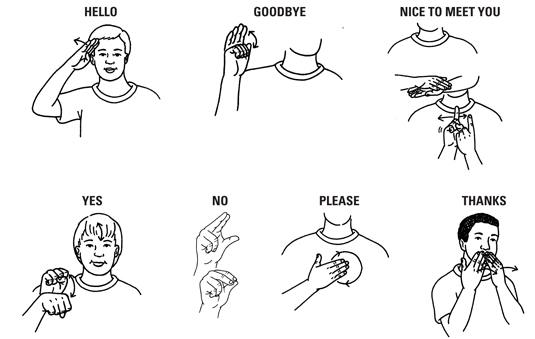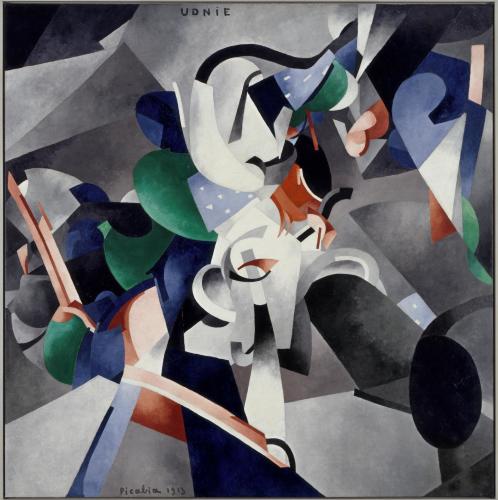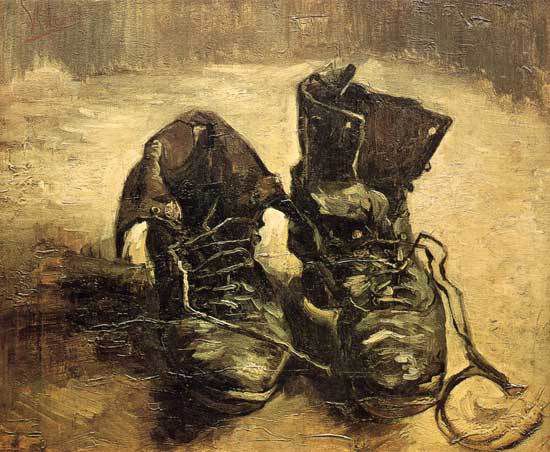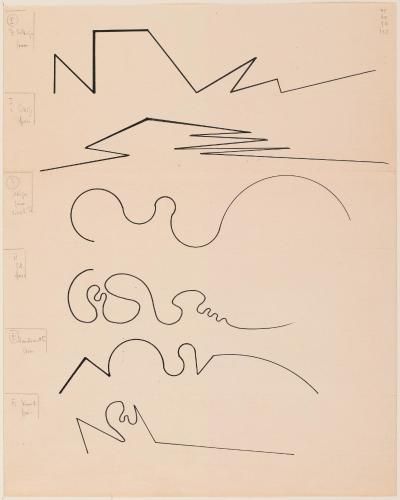May 2018
Is man condemned to settle for traditional language ? Is he a prisoner of this system of signs or is he capable of communicating in other ways ?
According to British evolutionary biologist John Maynard Smith, language has enabled the emergence of human societies through its ability to unite people around a common interest. Human beings have thus been led to socialize in order to share and evolve, as described in the myth of Babel. Before being condemned by God to the dispersion of languages, humanity spoke a single language and thus worked in perfect harmony. The dispersion of post-Babelic languages thus represents the allegory of the birth of the heterogeneity of cultures and the richness of languages. At the same time, it is the birth of translation, always imperfect, which is the image of a loss, a break between reality and language as if we had lost an ideal language, the divine language, this gift of God, which made it possible to know reality through the word.
Language therefore represents the ability to communicate and share the expression of a thought, feeling or emotion. It tries to imitate reality through a set of sounds, phonemes, signs and graphics. It is in this attempt to render reality that language translates an abstract concept into something understandable by the majority through the principle of analogies. Just as there are different language registers, there are different types of languages, whether verbal or essentially corporal. Moreover, according to cultures, alphabets and thus the way in which language is transcribed, differ in a plurality of signs.

Sign language takes somehow inspiration from everyday gestures and expressions to convey messages
This great diversity of signs, symbols and meanings therefore raises a question; whether everyone is capable of deciphering these analogies and by what means ? Is man condemned to be satisfied with this language? Is he a prisoner of this system of signs or is he able to communicate in other ways?
First of all, language implies a reflection on understanding. For John Locke, the 17th century English liberalist philosopher, understanding is what gives man his ability to be self-aware. To justify himself, Locke distinguishes, in the Essay on the Human Understanding, the primary qualities from the secondary qualities. The primary qualities determine the property of the bodies, the material, such as strength, extent and movement. Conversely, secondary qualities are more akin to what can be considered immaterial, or what is perceived by the senses, such as colours, smells and sounds.
The existence of a being would then only be related to its perception. In other words, everything that exists exists only as perceived by a perceiving subject. Thus, for George Berkeley, Irish Anglican bishop of Ireland, immaterialist, "to be is to be perceived"(1). In The New Theory of Vision, he therefore hypothesizes that objects specific to vision, namely light and colours, form a universal language of nature. It is then thanks to the arrangement of these objects that this language would make it possible to express and account for an almost infinite number of meanings of descriptive states and sensations. Euphranor(2), in Alciphron, defines vision according to properties specific to language. The language of man would then be the expression of the imitation of the archaic language of nature. Moreover, in Correspondances, Baudelaire insists on the ability of artists to understand the meaning of the analogies present in nature. Artists would then be able, through their pictorial creations, for example, and therefore through their own language, to imitate nature's language. Wassily Kandinsky also established a correlation between the primary shapes, the square, the circle and the triangle, also present in nature and the primary colours. He therefore defined the beginnings of a new type of alphabet of shapes and colours, and thus, of a new language. Moreover, in speaking of Malraux in Indirect language and the voices of silence, Merleau-Ponty explains that he considered painting as a way of representing the perceived world before him. Painting would therefore play the role of a language that conveys ideas and emotions.
This great diversity of signs, symbols and meanings therefore raises a question; whether everyone is capable of deciphering these analogies and by what means ? Is man condemned to be satisfied with this language? Is he a prisoner of this system of signs or is he able to communicate in other ways?
First of all, language implies a reflection on understanding. For John Locke, the 17th century English liberalist philosopher, understanding is what gives man his ability to be self-aware. To justify himself, Locke distinguishes, in the Essay on the Human Understanding, the primary qualities from the secondary qualities. The primary qualities determine the property of the bodies, the material, such as strength, extent and movement. Conversely, secondary qualities are more akin to what can be considered immaterial, or what is perceived by the senses, such as colours, smells and sounds.
The existence of a being would then only be related to its perception. In other words, everything that exists exists only as perceived by a perceiving subject. Thus, for George Berkeley, Irish Anglican bishop of Ireland, immaterialist, "to be is to be perceived"(1). In The New Theory of Vision, he therefore hypothesizes that objects specific to vision, namely light and colours, form a universal language of nature. It is then thanks to the arrangement of these objects that this language would make it possible to express and account for an almost infinite number of meanings of descriptive states and sensations. Euphranor(2), in Alciphron, defines vision according to properties specific to language. The language of man would then be the expression of the imitation of the archaic language of nature. Moreover, in Correspondances, Baudelaire insists on the ability of artists to understand the meaning of the analogies present in nature. Artists would then be able, through their pictorial creations, for example, and therefore through their own language, to imitate nature's language. Wassily Kandinsky also established a correlation between the primary shapes, the square, the circle and the triangle, also present in nature and the primary colours. He therefore defined the beginnings of a new type of alphabet of shapes and colours, and thus, of a new language. Moreover, in speaking of Malraux in Indirect language and the voices of silence, Merleau-Ponty explains that he considered painting as a way of representing the perceived world before him. Painting would therefore play the role of a language that conveys ideas and emotions.

Udnie - Picabia, 1913. Picabia got inspired by a dancer's moves and tried to interpret those moves in this painting
The shapes and colours, by their arrangement in the form of language, could then describe a sensation, an emotion, a mood, an atmosphere. Martin Heidegger, a postmodern German philosopher, explains, in Being and Time, how we agree with our existence as beings, through the notion of tonality, of German "stimmung". The stimmung would then define our mood, our way of being "in the world", by the atmosphere and the tone of the atmosphere that prevails. More concretely, music generally causes this feeling of being in harmony with the environment by the simple fact that we are sensitive and that the music touches us directly through vibrations, chords, lyrics and many other ways. Heidegger speaks of "resonance" because our being is in tune with the tone, and he described his feelings towards Van Gogh's painting, Les Souliers. The viewing (and by sensational extension, the listening) experience of this painting would have led the author to a form of transcendence. This painting thus aroused in Heidegger an association of the senses, called synesthesia, which later revealed an emotion, a feeling that may initially have been hidden at the bottom of the work.

Les Souliers - Vincent Van Gogh
In the context of music, the language composed of shapes and colours lives through this notion of synesthesia, the association of two or more senses. If we agree that stimmung, by a particular combination of shapes and colours, stimulates our ability to resonate with the atmosphere of our environment, we could imagine illustrating the general atmosphere of a given music. It would then be a question of "capturing what is said with the eyes" by translating the tone, the overall mood of the music, in the manner of Baudelaire, his calligrams or his collection Le Spleen de Paris. The poet seeks to create a versification capable of blurring the senses to give access to the ideal, a sensory paradise, where all sensations merge complimentarily: to show a smell or taste a sound. The idea being to separate precisely from the boundaries of reality and the language which is condemned by instrumental use. Language is thus more a place of expression than a tool of communication. In effect, Baudelaire's poetry and synesthesia are an attempt at recreating, or resurrecting this ideal language: a poetic language beyond the imperfect post-babelic languages. We can also mention Arthur Rimbaud, who, in 1871, published Voyelles, a poem in which he assigns traits to vowels, including a colour and a fantasized idea of what the letter portrays for him.
In Musicophilia, Oliver Sacks, a British neurologist and writer, explains that Isaac Newton conceived the existence of a correspondence between the seven distinct colours of the light spectrum and the seven notes of the diatonic scale. Thus, as early as the 17th century, Newton already laid the foundations for the synesthesia and correlation between music and the secondary qualities referred to by John Locke. A concrete example of the synaesthesia of Oliver Sacks is the need for some people to hum the ABC song to remember the alphabet. The author explains that it is the combination of song and alphabet that is decisive for the perception of the latter. Unlike Baudelaire, Oliver Sacks believes that artists are not the only ones who conceive the world of ideas. It is as a child that we learn to recite the alphabet by humming it. Learning in such a way takes a long time, and works best for individuals who are inclined to associate different concepts with each other.
Therefore, Oliver Sacks seems to think that everyone is capable of expressing through concepts.
Man would therefore be able to emancipate himself from his primary language of words, signs and sounds in order to communicate through perhaps more intuitive forms such as the translation of the language of nature, painting and art in general, or synesthesia. Through these different languages, man could then grasp an abstract concept and assign to it a characteristic, a shape, a colour, a concrete translation thanks to his environment, its context and therefore the atmosphere that emerges around man.
So, this language seems to flow from our culture and education. We can then consider it like a non-conscient form of expression which enables us to communicate with strangers.
Related to design, it allows us to express an intention using a minimum of texts and first stage references such as pictures. Using codes that the majority of people understand and can relate to, like a combination of shapes and colors, or a particular ambient sound, we can communicate differently and maybe more efficiently because we would then be talking to the inner us. And as Victor Vasarely once said, "A global civilisation must have a corresponding global plastic language - one that is simple, beautiful, and acceptable to all. Better yet : fit for use by all." And this is what Kandinsky was aiming for. In Point and Line to Plane, he established a geometrical code, through lines and angles represented graphically, that could speak to the inner us. In fact, he explains that straight lines in a plane, let's say painted in black on a white canvas for example, express concepts like temperature, colors and intuitions. Through their direction, their angle or even through their composition on the canvas, we unconsciously understand meanings, feelings or sensations. According to Kandinsky, to understand this language, it would only require reaching "the inner resonance of the form (bodily and above all abstract)". This way, the artwork as a whole is no longer abstract, but communicates through its combination of lines, angles and colours to resonate within us.

Different types of lines drawn by Wassily Kandinsky to express different emotions
(1) "To be is to be perceived" (from the Latin esse is percipi aut percipere) - George Berkeley, Principles of Human Knowledge
(2) Euphranor, a Greek artist of the 4th century BC, was taken up by Berkeley to stage a dialogue between him and Alciphron, a Greek author of the 2nd century, on the existence of God
With the help of Mr. Sandler, my former philosophy teacher.
Hi!
I'm a freelance CGI Artist, Director and Interactive Designer based in Paris. I mainly work on musical, fashion and luxury projects.
As a multidisciplinary designer, I am able to work on a variety of projects, be it video, image or interactive installation.
I also teach 3D Design at Gobelins, l'école de l'image, in Paris, and make music passionately under CHMSTRY.
Contact Rémy Bourçois
3D lover ♥